4 Aug 2022 | Ruth's blog
On the hottest day of the year, the professional team at Index was due to have an in-person brainstorming session about what might come our way next and what we needed to be prepared for. Our away day quickly became a virtual session with everyone melting in the heat.
In the midst of the conversation, one of my brilliant team members described one part of her work, that on SLAPPs (strategic lawsuits against public participation), as challenging reputation laundering. While that’s exactly what she’s been doing, I haven’t been able to move on from that phrase.
As unimpeded access to information becomes the norm in democracies in the 21st century, it might be easy to assume that rewriting history to agree with your own world view would be almost impossible. It feels, however, increasingly naive to believe that immediate access to this sheer volume of news and information is actually protecting truth. We face misinformation and propaganda campaigns at a state actor level, single issue activists, the misuse of libel laws and the increasing use of SLAPPs, as well as outright lies by bad faith actors, making it difficult to determine the reality of a situation.
This is compounded when people are ashamed of their history or don’t have the tools to talk about it.
Which brings me to my holiday last week. I had a wonderful break in Barcelona with my partner, doing all the tourist stuff you do on a city break. But by the third day, it became clear that there was one thing that no one was talking about – the Spanish Civil War. The Barcelona picture book in our room didn’t mention it. The plaques around the city missed out great swathes of Barcelona’s history from 1936 until the mid 1970s. The civil war wasn’t even touched upon at the Maritime Museum or either of the two cathedrals we visited, which were sites of some of the revolts. And the city open-top bus tour (the ultimate tourist experience) mentioned neither Franco nor the fact that the city had been the site of some of the most violent clashes in the civil war. In fact, it didn’t even mention the civil war.
Our response was to read more and to join the Walking Museum of the Spanish Civil War in Barcelona (which was brilliant). But the more we read and the more we walked, the more I couldn’t move on. As we ate on La Ramblas, I watched tourists from around the world having an amazing time, but I wondered how many of them knew its history. In 1936, this was the site of a street battle where people were killed feet from where we now sat because they were adamantly fighting for democracy and freedom. When we walked past the Moka coffee shop, I wondered how many people eating a pastry realised that George Orwell had taken refuge there. And when we went to the anarchist bookshop (obviously required shopping on holiday), I wondered how many people walking past realised that its former staff led the fight against Franco’s fascists in the city.
After the fall of Franco, the Spanish decided that it was too difficult and too divisive to engage in a peace and reconciliation process. Instead, most political parties agreed to draw a line in the sand and move on, ignoring their immediate past. My experiences last week suggest that at least for corporate Spain that remains true, but the political reality for Spaniards is apparently now a little different. The whereabouts are still unknown of 114,000 people who disappeared under Franco’s regime, and their grandchildren want to know what happened to them. Now, there is a growing memory movement. Because political leaders failed to agree on an established factual version of Franco’s regime, there are now increasing tensions between the political left and the right as to what really happened, with revisionism and denialism an increasing theme in mainstream Spanish politics.
What I witnessed in Barcelona was not only an example of attempted reputation laundering – it was an effort to run from a country’s past, which I truly believe is impossible. But that’s only impossible because of us – the rest of us. We have to study and understand atrocities from the past and make sure that the truth will out. It is our ultimate responsibility as people who campaign to protect freedom of expression.
19 Oct 2020 | News and features
[vc_row][vc_column][vc_column_text]
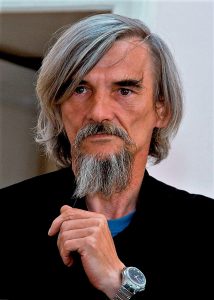
Russian historian Yuri Dmitriev, who has been imprisoned following research into murders committed by Stalin. Credit: Mediafond/Wikimedia
Western democracies have expressed concern and outrage, at least verbally, over the Novichok poisoning of Alexei Navalny—and this is clearly right and necessary. But much less attention is being paid to the case of Yuri Dmitriev, a tenacious researcher and activist who campaigned to create a memorial to the victims of Stalinist terror in Karelia, a province in Russia’s far northwest, bordering Finland. He has just been condemned on appeal by the Supreme Court of Karelia to thirteen years in a prison camp with a harsh regime.
The hearing was held in camera, with neither him nor his lawyer present. For this man of sixty-four, this is practically equivalent to a death sentence, the judicially sanctioned equivalent of a drop of nerve agent.
After an initial charge of child pornography was dismissed, Yuri Dmitriev was convicted of sexually assaulting his adoptive daughter. These defamatory charges appear to be the latest fabrication of a legal system in thrall to the FSB—a contemporary equivalent, here, of the nonsensical slander of “Hitlerian Trotskyism” that drove the Great Terror trials. It is these same charges, probably freighted with a notion of Western moral decadence in the twisted imagination of Russian police officers, that were brought in 2015 against the former director of the Alliance Française in Irkutsk, Yoann Barbereau.
I met Yuri Dmitriev twice: the first time in May 2012, when I was planning the shooting of a documentary on the library of the Solovki Islands labor camp, the first gulag of the Soviet system; and the second in December 2013, when I was researching my book Le Météorologue (Stalin’s Meteorologist, 2017), on the life, deportation, and death of one of the innumerable victims murdered by Stalin’s secret police organizations, OGPU and NKVD.
In both cases, Dmitriev’s help was invaluable to me. He was not a typical historian. At the time of our first meeting, he was living amid rusting gantries, bent pipes, and machine carcasses, in a shack in the middle of a disused industrial zone on the outskirts of Petrozavodsk—sadly, a very Russian landscape. Emaciated and bearded, with a gray ponytail, he appeared a cross between a Holy Fool and a veteran pirate—again, very Russian. He told me how he had found his vocation as a researcher—a word that can be understood in several senses: in archives, but also on the ground, in the cemetery-forests of Karelia.
In 1989, he told me, a mechanical digger had unearthed some bones by chance. Since no one, no authority, was prepared to take on the task of burying with dignity those remains, which he recognized as being of the victims of what is known there as “the repression” (repressia), he undertook to do so himself. Dmitriev’s father had then revealed to him that his own father, Yuri’s grandfather, had been shot in 1938.
“Then,” Dmitriev told me, “I wanted to find out about the fate of those people.” After several years’ digging in the FSB archive, he published The Karelian Lists of Remembrance in 2002, which, at the time, contained notes on 15,000 victims of the Terror.
“I was not allowed to photocopy. I brought a dictaphone to record the names and then I wrote them out at home,” he said. “For four or five years, I went to bed with one word in my head: rastrelian—shot. Then, I and two fellow researchers from the Memorial association, Irina Flighe and Veniamin Ioffe (and my dog Witch), discovered the Sandarmokh mass burial ground: hundreds of graves in the forest near Medvejegorsk, more than 7,000 so-called enemies of the people killed there with a bullet through the base of the skull at the end of the 1930s.”
Among them, in fact, was my meteorologist. On a rock at the entrance to this woodland burial ground is this simple Cyrillic inscription: ЛЮДИ, НЕ УБИВАЙТЕ ДРУГ ДРУГА (People, do not kill one another). No call for revenge, or for putting history on trial; only an appeal to a higher law.
Memorials to the victims of Stalin’s Terror at Krasny Bor, Karelia, 2018; the remains of more than a thousand people shot between 1937 and 1938 at this NKVD killing field were identified by Dmitriev, using KGB archival records
Not content to persecute and dishonor the man who discovered Sandarmokh, the Russian authorities are now trying to repeat the same lie the Soviet authorities told about Katyn, the forest in Poland where NKVD troops executed some 22,000 Poles, virtually the country’s entire officer corps and intelligentsia—an atrocity that for decades they blamed on the Nazis. Stalin’s heirs today claim that the dead lying there in Karelia were not victims of the Terror but Soviet prisoners of war executed during the Finnish occupation of the region at the beginning of World War II. Historical revisionism, under Putin, knows no bounds.
I am neither a historian nor a specialist on Russia; what I write comes from the conviction that this country, for which I have a fondness, in spite of all, can only be free if it confronts its past—and to do this, it needs courageous mavericks like Yuri Dmitriev. And I write from the more personal conviction that he is a brave and upright man, one whom Western governments should be proud to support.
This article was translated from the French by Ros Schwartz. It was originally published on the New York Review of the Books here under the headline Yuri Dmitriev: Historian of Stalin’s Gulag, Victim of Putin’s Repression.
Read our article exploring Dmitriev’s case and how history is being manipulated and erased here.[/vc_column_text][/vc_column][/vc_row]
15 Oct 2020 | China, India, News and features, Pakistan
[vc_row][vc_column][vc_column_text]The Indian government’s revocation of autonomy for Jammu and Kashmir has been a disaster for free speech.
In October 2019, Narendra Modi’s government rescinded article 370 of the Indian constitution which had given the region special autonomous status since 1954. The region is now run as two separate union territories – Ladakh, and Jammu and Kashmir.
Ever since its autonomy was curtailed, access to information for inhabitants has been greatly reduced.
Despite palpable risks to their safety, journalists in the disputed region have remained, but a lack of access to internet has hindered their progress.
Set in the Himalayas, the region is famously beautiful – often described as “heaven on Earth” – but this is in stark contrast to the fierce and often bloody dispute wracking Jammu and Kashmir.
As the situation worsens, we look back at pieces published in Index magazine and online exploring the impact the conflict has had on free speech, journalists and the people who call Kashmir their home.
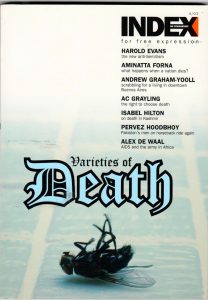
Varieties of death, the winter 2002 issue of Index on Censorship magazine.
Journalist and broadcaster Isabel Hilton visited Kashmir in the early 2000s. She documented her experiences in 2002 and spoke of her encounters with Pakistani military.
The piece is an insight into how much of major conflicts can seem underreported, but in fact are not. For journalists working in the region, the daily reports of death tolls and atrocities are both a livelihood and a duty, but only major events tend to make headline news across the world.
She wrote: “In Srinagar, the journalists — themselves constantly threatened and often attacked by both sides — have grown weary of looking for new angles on death. Only the larger outrages — such as the car bomb attack on Srinagar’s assembly building on 1 October last year which claimed more than 30 lives — are reported internationally.”
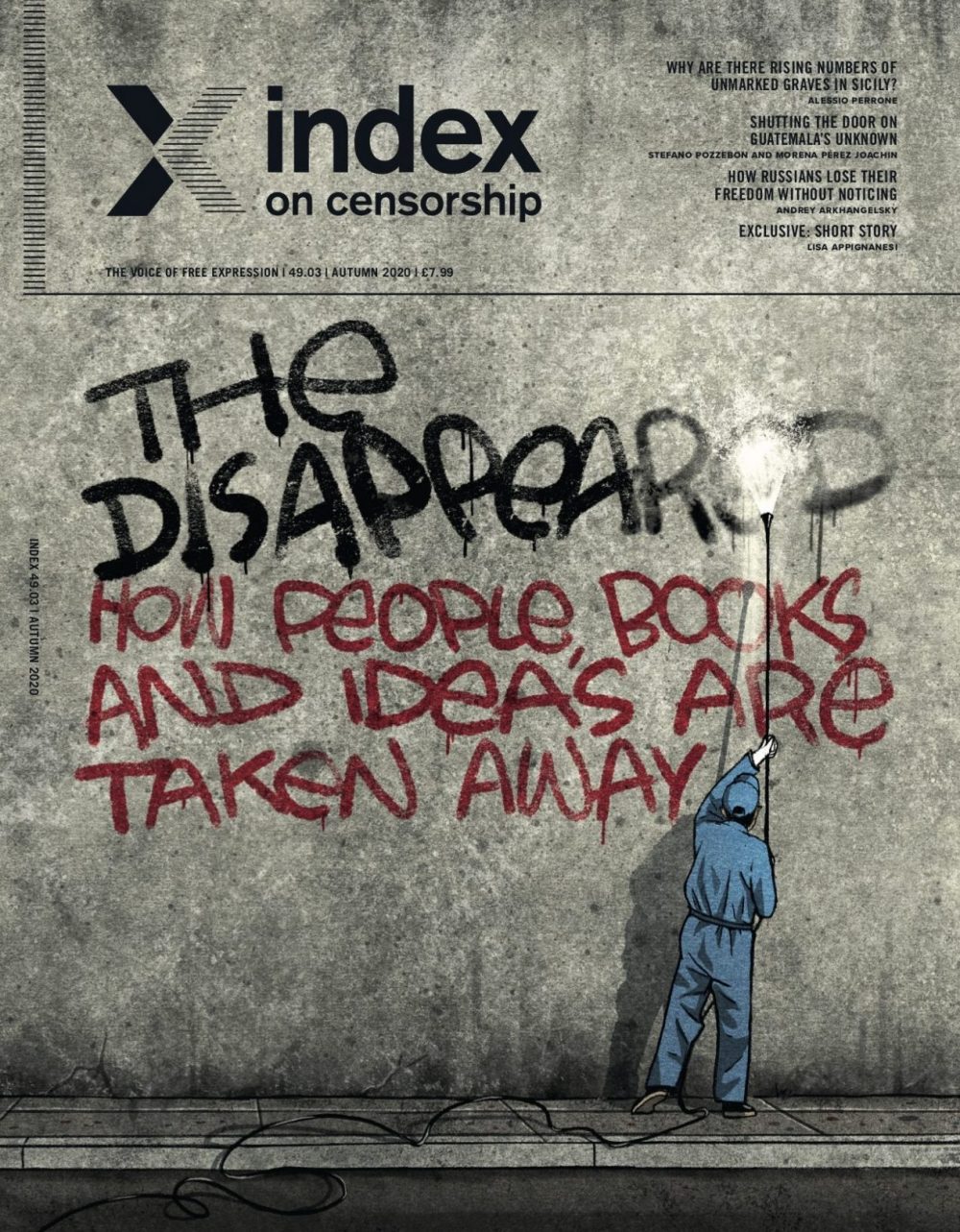
Index on Censorship autumn 2020 issue on the theme of the disappeared
In the most recent edition of Index (which can be read here), Bilal Ahmad Pandow discussed the experiences of journalists in Kashmir.
Since India took control and imposed direct rule, a feeling of (relative) security in the region has been lost and censorship laws have taken a firm grip, he writes.
A new policy for journalists introduced this year by the Jammu and Kashmir government imposes rules on restricting “fake news, plagiarism and unethical or anti-national content”.
“Pressure on media freedom was ratcheted up even further with the introduction of the New Media Policy 2020. Journalists were, of course, already operating under tremendous pressure – harassment, intimidation, the choking of advertisement revenue, imprisonment, draconian laws and a communication blockade – all of which are forcing journalists to self-censor.”
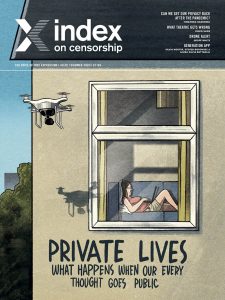
Index on Censorship summer 2020 issue on the theme of privacy
Earlier this year, Kashmiri journalist Bilal Hussain spoke with Index’s Orna Herr on life in the media in the region.
He told Herr of his personal struggles to get copy and videos past online restrictions and out of the country. Journalists have been creative in their attempts to get past the internet blocks designed to limit media freedom, he said.
“Since March 2020, the government allowed restricted internet access that blocked many news websites. So journalists installed VPNs that could break the firewall and enabled journalists to access those websites.”
“Some journalists used to travel to Delhi to access the internet and came back after filing their reports.”
“To get video interviews to my editor in Paris, I put them on a memory stick and gave it to a friend who was travelling to the USA, and he sent it on from there.”

Varieties of death, the winter 2002 issue of Index on Censorship magazine.
Poet Agha Shadid Ali was born in Kashmir in 1949. He moved to the USA in 1976 but his home was always at the forefront of his literary works.
His 1997 work Country Without a Post Office discussed the plight of Kashmir. At the time of their publication, he said: “My entire emotional and imaginative life began to revolve around the suffering of Kashmir.”
Ali died of brain cancer in 2001. Index included two of his poems following the 2002 Kaluchak massacre in which militants attacked a tourist bus, killing 31 people and injuring 47.
[/vc_column_text][/vc_column][/vc_row][vc_row][vc_column][vc_column_text]

Media moguls & megalomania, the September 1994 issue of Index on Censorship magazine
This piece from 1994 by Caroline Moorehead shows how the human rights spotlight was finally being turned onto Jammu and Kashmir.
She writes: “In their war against the militants…the Indian police and security fores have come to treat disappearances with a combination of lethargy, obfuscation and threats, connived at by the judiciary. Court orders are ignored, relatives warned to stop making enquiries, and the case is shifted from place to place while documents are mislaid and those responsible posted to other places.”
It tells the story of the disappearance of 22-year-old Harjit Singh, a far from unusual story in the region.[/vc_column_text][/vc_column][/vc_row][vc_row][vc_column][vc_column_text]
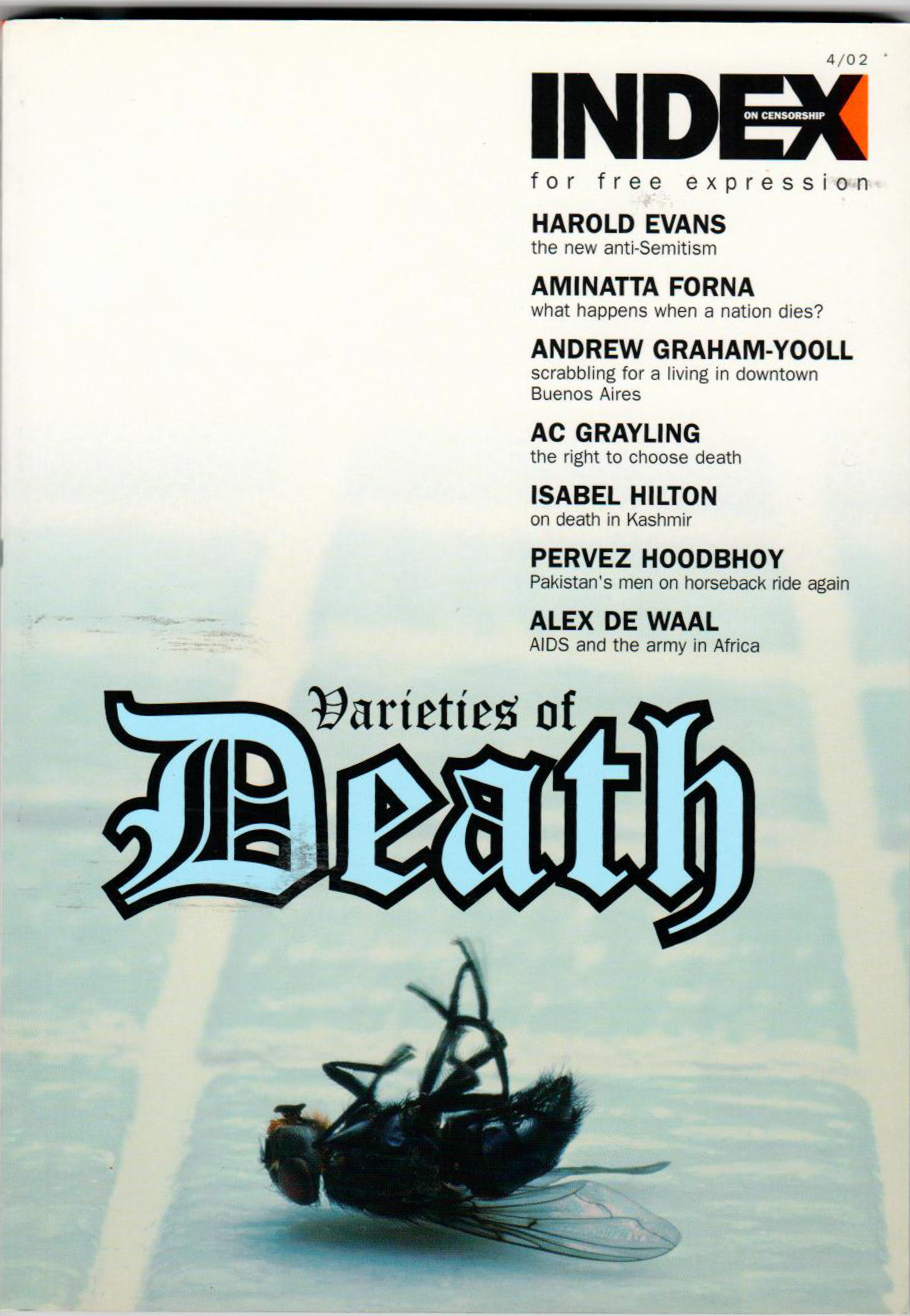
Varieties of death, the winter 2002 issue of Index on Censorship magazine.
Beyond the Gun is a collection of photographs and statements from Kashmiri people in 2002. Its emotive language and testimony from residents who felt betrayed by India’s handling of the region, coupled with photographs of members of the community, make for a stirring read.
By Sheba Chhachhi, each photograph and collected testimony tells a different story. Some, like the words from carpet worker Jana, show the danger of bringing to light the problems caused by local authorities and provides a chilling account of escaping molestation by a border security force soldier.
Jana said: “I faced the power of his gun with the power of my mind. I felt no fear. I had the axe. Had the axe not been there; there was a rolling pin, a ladle. If I had a gun, they would have seized it long ago. These are my own implements. No one can take them away from me.”[/vc_column_text][/vc_column][/vc_row][vc_row][vc_column][vc_column_text]

Partition, the November 1997 issue of Index on Censorship magazine
In 1997, Pakistan and India celebrated 50 years of independence, but continuing tensions between the two muted the festivities.
In this article from that year, Eqbal Ahmad set out the problems caused by a misguided approach to decolonisation by the United Kingdom, which led to the partition of Pakistan and Bangladesh.
Though not specifically about the troubles in Kashmir, much of the hostility between Pakistan and India is thoughtfully explained and ensures a greater understanding of the conflict.[/vc_column_text][/vc_column][/vc_row][vc_row][vc_column][vc_column_text]

Varieties of death, the winter 2002 issue of Index on Censorship magazine.
In this 2002 article, Sidharth Bhatia claims India once had the world’s largest and freest media, something which has now changed. It takes a historical journey explaining chronologically just how India’s media freedom has been squeezed.
Bhathia ponders the problems populist jingoism can have on freedoms, citing the border war in 1999 as a prime example.
“More worrying is the decline in any challenge to the received wisdom on contentious issues such as human rights abuses, especially in Kashmir. This was seen at its most blatant during the border war at Kargil in 1999 between Indian and Pakistani soldiers (disguised as irregulars) who had infiltrated the area.”[/vc_column_text][/vc_column][/vc_row][vc_row][vc_column][three_column_post title=”You may also like to read” category_id=”581″][/vc_column][/vc_row]
10 Jul 2020 | News and features, Student Reading Lists
[vc_row][vc_column][vc_column_text]This week, 150 writers and academics signed an open letter expressing dismay at the current state of free and open debate. The list of signatories is like a Who’s Who of contributors to Index on Censorship magazine over the years. We have looked into our archives to dig out some of the articles we have published by some of the signatories.
Margaret Atwood defends fiction as a worthwhile use of free expression, Salman Rushdie decries total censorship in Pakistan, Noam Chomsky examines how atrocities are reported by those committing them, Nadine Strossman writing in 1995 paints a shockingly current picture of the USA today, and Eva Hoffman discusses her relationship with language as a Polish emigrant to Canada.
Don’t tell us what to write – Margaret Atwood
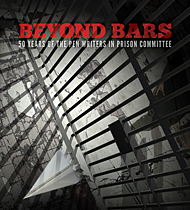 Writing for a special edition of Index on Censorship in 2010, which marked 50 years of the Pen Writers in Prison Committee, Margaret Atwood upheld the importance of being free to write unfettered by expectations or demands. Atwood explored the impulse of journalists to reveal the truth, writing: “You can take the guts out of the investigative journalists, both figuratively and literally, but so far no one has been able to completely suppress the human urge that’s at least as old as the Book of Job: the need to tell.” She also examined attitudes towards fiction. Being a self-described fiction writer and poet, Atwood talked about how fiction writers often write with intentions to make a certain impact, perhaps to better their readers or the world at large, but placing this as a caveat for fiction to be considered worthwhile,”is to fall into the very same kind of thinking that leads to censorship.” Click here to read the full article.
Writing for a special edition of Index on Censorship in 2010, which marked 50 years of the Pen Writers in Prison Committee, Margaret Atwood upheld the importance of being free to write unfettered by expectations or demands. Atwood explored the impulse of journalists to reveal the truth, writing: “You can take the guts out of the investigative journalists, both figuratively and literally, but so far no one has been able to completely suppress the human urge that’s at least as old as the Book of Job: the need to tell.” She also examined attitudes towards fiction. Being a self-described fiction writer and poet, Atwood talked about how fiction writers often write with intentions to make a certain impact, perhaps to better their readers or the world at large, but placing this as a caveat for fiction to be considered worthwhile,”is to fall into the very same kind of thinking that leads to censorship.” Click here to read the full article.
Last chance? Salman Rushdie

Writers and Apartheid, the June 1983 issue of Index on Censorship magazine.
Is there dark humour to be found in an oppressive regime’s censorship? Salman Rushdie opened his piece, first published in Index in 1983 and republished in 2012 in the 40 year anniversary special issue, by examining this question through his first encounters with the censorship of films as a child. Censorship, he wrote, became less of an abstract source of the absurd when he began to experience it as a personal reality. On returning to Karachi, Pakistan after studying at Cambridge, Rushdie’s attempts at expression and creativity were curtailed by censors, at one point being told “ ‘the word pork may not be spoken on Pakistan television.’” He wrote of the total censorship enacted by the Pakistani government who, unlike the Indian government, had a firm and terrifying grip over journalists. What are the effects of such censorship? Rushdie questioned. “Where there is no debate, it is hard to go on remembering, every day, that there is a suppressed side to every argument. It becomes almost impossible to conceive of what the suppressed things might be.” Click here to read the full article.
Confronting the Monster – Noam Chomsky
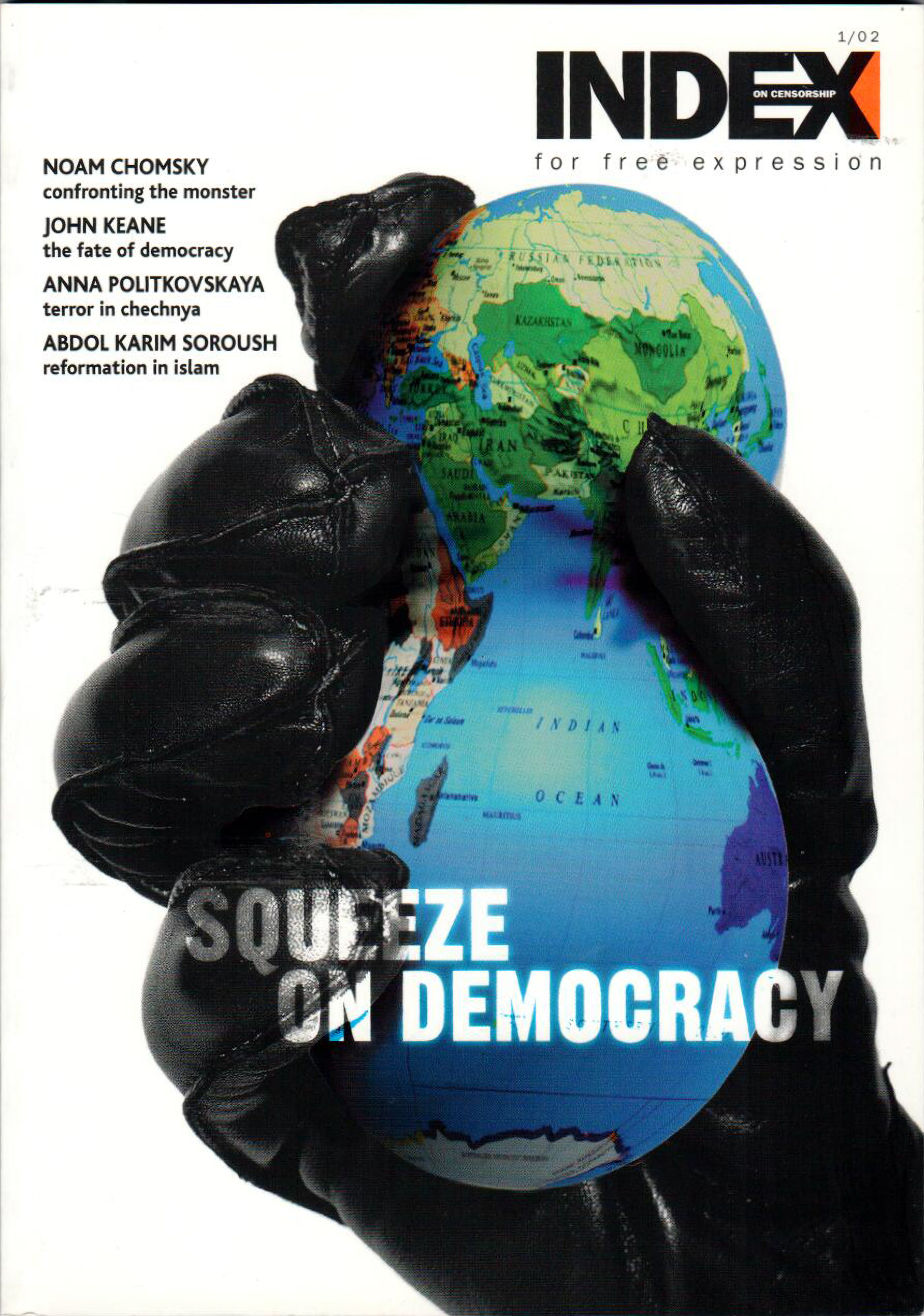
Squeeze on democracy, the spring 2002 issue of Index on Censorship magazine.
Writing in early 2002, arguably of the most pivotal points in recent US history, Noam Chomsky examined the coverage, or lack thereof, of the reaction and aftermath of the 9/11 terrorist attacks, and uses this example to dissect the notions of “them” and “us” in reporting on atrocities. The bombing campaign carried out by the US army on Afghanistan in October 2001, Chomsky wrote, left millions of Afghan civilians starving. Appeals to the US for an end to the bombing from UN bodies were rejected, and this was “virtually unreported”, as was a warning of humanitarian catastrophe from the Food and Agricultural organisation. Chomsky explained that the erasure of one’s own crimes against humanity is not a uniquely American phenomenon writing: “Only those entirely ignorant of modern history will find any of this surprising.” In the early 1990s, Chomsky wrote, the British government removed from the Public Record Office all files concerning the use of poisonous gas against “uncivilised tribes”. He summed up “the powerful determine what counts as history, what passes through the filters is the terrorism of the weak against the strong and their clients.” Click here to read the full article.
Diverting Tactics – Nadine Strossman

Rewriting history, the May 1995 issue of Index on Censorship magazine
Despite having been written in 1995 Nadine Strossman’s article examining attacks on The Bill of Rights, freedom of expression, and the groups in US society these attacks have the harshest impact on, feels startlingly current. Strossman wrote that the government proposals to criminalise desacration of the US flag would amount to “punishing the political protest that should be the most protected form of expression in a democratic society”. The violent dispersal of the ongoing protests sparked by the murder of George Floyd is a chilling reminder of the assault on freedom of expression in the USA today. Strossman highlighted how the rights of non-white groups are being specifically targeted through the disparagement of affirmative action programmes, which displays “the diminished national commitment to racial justice”. This is another topic, it perhaps goes without saying, that is an issue in present-day America. Strossman dissected the actions of politicians as quick fixes for societal problems. Click here to read the full article.[/vc_column_text][/vc_column][/vc_row][vc_row][vc_column][vc_column_text]Words between worlds – Eva Hoffman and Raja Shehadeh
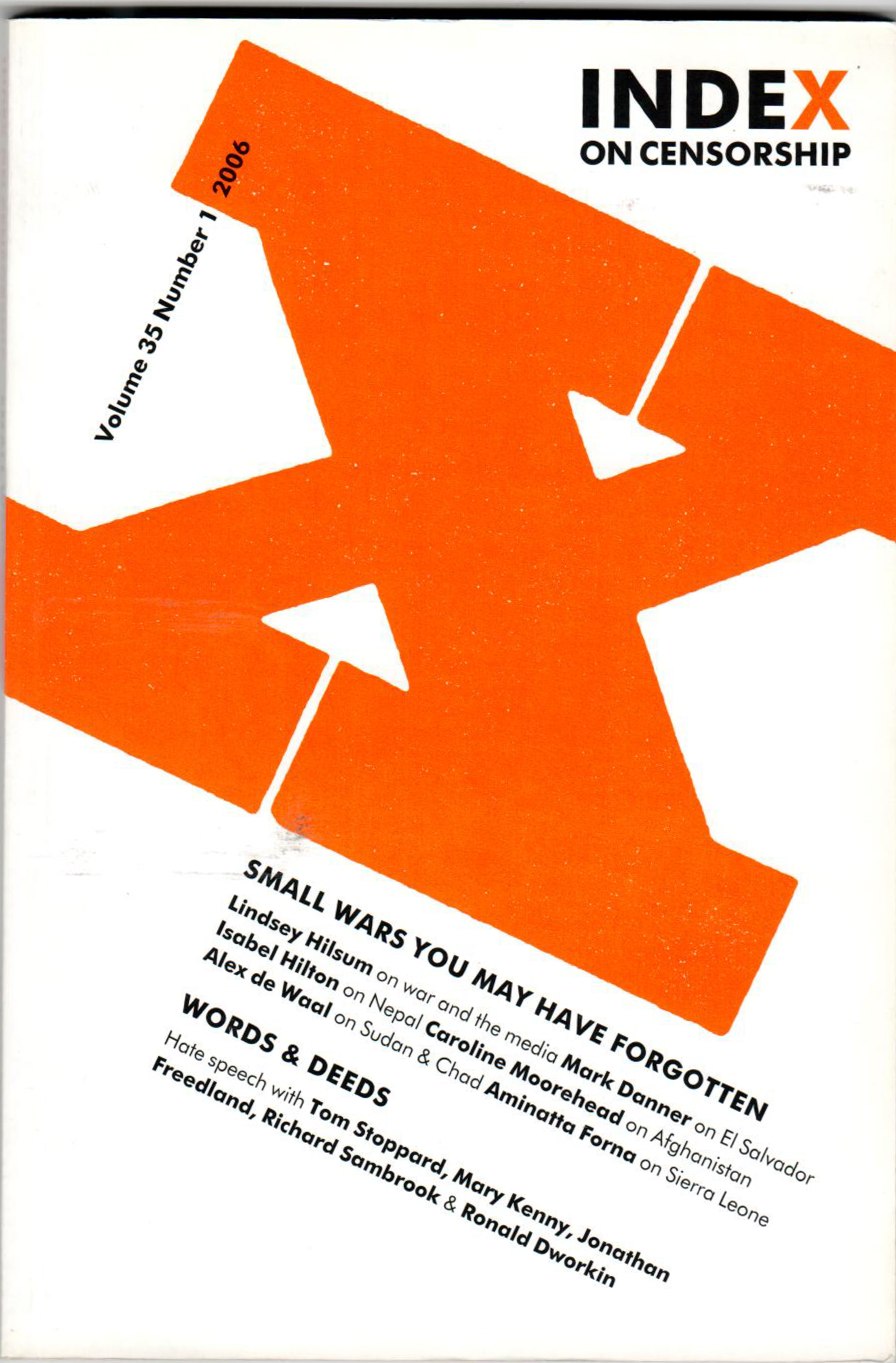 Eva Hoffman, author of Lost in Translation, spoke to then-editor Judith Vidal-Hall about her experience of emigrating from Poland to Canada as a child and developing a new relationship with language. As her native Polish became surplus to requirement, and English loomed as an unknown quantity, “I discovered to what extent language and culture constructs us really. To what extent it informs not only our larger assumptions and ideologies about the world”. Hoffman told Vidal-Hall how, having absorbed English as a second language, she found it to be beneficial as a writer; it gave her a vantage point of two cultures, two worlds. When asked why she started to write, Hoffman explained that through her words she might connect with people who had shared similar experiences: “I had some hope that perhaps I was trying to talk about things that had some meaning for other immigrants as well, that perhaps there was a kind of broader meaning to it”. Click here to read the full article.[/vc_column_text][/vc_column][/vc_row][vc_row][vc_column][three_column_post title=”You might also want to read” category_id=”7273″][/vc_column][/vc_row]
Eva Hoffman, author of Lost in Translation, spoke to then-editor Judith Vidal-Hall about her experience of emigrating from Poland to Canada as a child and developing a new relationship with language. As her native Polish became surplus to requirement, and English loomed as an unknown quantity, “I discovered to what extent language and culture constructs us really. To what extent it informs not only our larger assumptions and ideologies about the world”. Hoffman told Vidal-Hall how, having absorbed English as a second language, she found it to be beneficial as a writer; it gave her a vantage point of two cultures, two worlds. When asked why she started to write, Hoffman explained that through her words she might connect with people who had shared similar experiences: “I had some hope that perhaps I was trying to talk about things that had some meaning for other immigrants as well, that perhaps there was a kind of broader meaning to it”. Click here to read the full article.[/vc_column_text][/vc_column][/vc_row][vc_row][vc_column][three_column_post title=”You might also want to read” category_id=”7273″][/vc_column][/vc_row]








 Writing for a special edition of Index on Censorship in 2010, which marked 50 years of the Pen Writers in Prison Committee, Margaret Atwood upheld the importance of being free to write unfettered by expectations or demands. Atwood explored the impulse of journalists to reveal the truth, writing: “You can take the guts out of the investigative journalists, both figuratively and literally, but so far no one has been able to completely suppress the human urge that’s at least as old as the Book of Job: the need to tell.” She also examined attitudes towards fiction. Being a self-described fiction writer and poet, Atwood talked about how fiction writers often write with intentions to make a certain impact, perhaps to better their readers or the world at large, but placing this as a caveat for fiction to be considered worthwhile,”is to fall into the very same kind of thinking that leads to censorship.” Click
Writing for a special edition of Index on Censorship in 2010, which marked 50 years of the Pen Writers in Prison Committee, Margaret Atwood upheld the importance of being free to write unfettered by expectations or demands. Atwood explored the impulse of journalists to reveal the truth, writing: “You can take the guts out of the investigative journalists, both figuratively and literally, but so far no one has been able to completely suppress the human urge that’s at least as old as the Book of Job: the need to tell.” She also examined attitudes towards fiction. Being a self-described fiction writer and poet, Atwood talked about how fiction writers often write with intentions to make a certain impact, perhaps to better their readers or the world at large, but placing this as a caveat for fiction to be considered worthwhile,”is to fall into the very same kind of thinking that leads to censorship.” Click 


 Eva Hoffman, author of Lost in Translation, spoke to then-editor Judith Vidal-Hall about her experience of emigrating from Poland to Canada as a child and developing a new relationship with language. As her native Polish became surplus to requirement, and English loomed as an unknown quantity, “I discovered to what extent language and culture constructs us really. To what extent it informs not only our larger assumptions and ideologies about the world”. Hoffman told Vidal-Hall how, having absorbed English as a second language, she found it to be beneficial as a writer; it gave her a vantage point of two cultures, two worlds. When asked why she started to write, Hoffman explained that through her words she might connect with people who had shared similar experiences: “I had some hope that perhaps I was trying to talk about things that had some meaning for other immigrants as well, that perhaps there was a kind of broader meaning to it”. Click
Eva Hoffman, author of Lost in Translation, spoke to then-editor Judith Vidal-Hall about her experience of emigrating from Poland to Canada as a child and developing a new relationship with language. As her native Polish became surplus to requirement, and English loomed as an unknown quantity, “I discovered to what extent language and culture constructs us really. To what extent it informs not only our larger assumptions and ideologies about the world”. Hoffman told Vidal-Hall how, having absorbed English as a second language, she found it to be beneficial as a writer; it gave her a vantage point of two cultures, two worlds. When asked why she started to write, Hoffman explained that through her words she might connect with people who had shared similar experiences: “I had some hope that perhaps I was trying to talk about things that had some meaning for other immigrants as well, that perhaps there was a kind of broader meaning to it”. Click